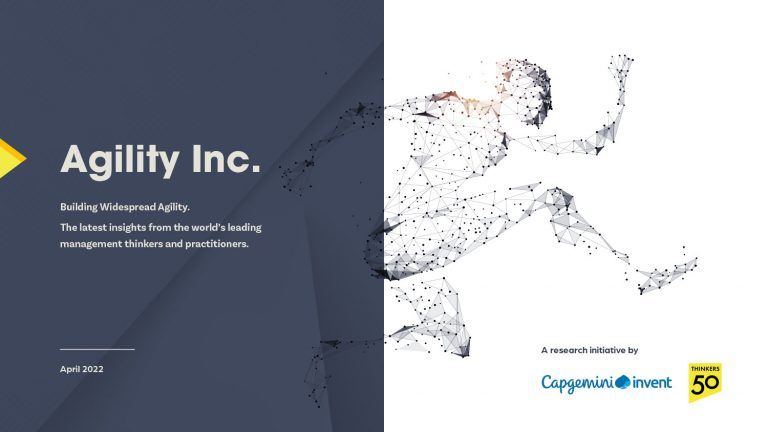

No one doubts that technology has changed our lives. Global on line sales have doubled in five years to over $1.5 trillion. The Big Six social networks (Facebook, Twitter, LinkedIn, Instagram, Google+, and Pinterest) exceed 2.4 billion people. The largest of which, Facebook, would be the second most populous country on the planet, after China. Technology pervades our daily lives in how we use computers, communicate, access entertainment, drive, shop, form relationships, and so forth. Unprecedented and fast innovation in technology increases access, shares information, and removes boundaries.
So, what are the implications for HR?
The digital world of HR is a major theme for dozens of HR conferences and new applications and tools with great promise. In our research with over 32,000 respondents (see Victory Through Organization), we identified 9 HR competencies, one of which was “technology and social media integrator.” We found that
Because technology matters, it would be helpful for an HR department to audit its perspective on technology by examining four phases and questions.
Phase 1: to what extent do we use technology to streamline administrative HR work?
Large global firms like Oracle (with PeopleSoft), SAP (with Success Factors), and Workday (with Workday Human Capital Management) offer technology platform services, engineered systems and software applications for business and HR solutions. These firms often build the backbone for shared services where work is done faster, cheaper, and easier.
Phase 2: to what extent do we use technology to innovate our HR practices?
Every HR practice area is being upgraded through technology. These upgrades drive both efficiency beyond the administrative work and effectiveness in delivering HR value.
| HR practice area | Technology innovations |
| People |
|
| Performance |
|
| Communication |
|
| Organization work |
|
Phase 3: to what extent do we use technology to access information?
We found in our research that information management is the most critical capability to deliver business results. Access to information traditionally gives leaders power because they have more information than their employees. Today, with ubiquity of information access through technology, information is less about power and more about the ability to make better business decisions. HR departments can influence information capability in a number of ways.
First, HR will play a role in building information capability in their organization by hiring information experts. Sixty percent of occupations could have up to 30% of their activities automated including radiologists, design engineers, market researchers and HR professionals. They are being replaced by big data analysts, social media experts, cloud builders, app developers, and other types of information specialists. Software engineering jobs will grow at a rate of 18.8% by 2024 which is triple the rate of overall job growth rate. HR can help source and secure this talent.
Second, HR can ensure that external information comes into an organization to inform decisions. HR analytics is less about using information to improve HR practices (e.g., HR scorecards, HR insights) and more about accessing information to make better business decisions. In this regard, HR can be the architect of prioritizing key business decisions, then sourcing information both outside and inside the organization to improve those decisions.
Third, information that delivers business results may be structured information that is found on a spreadsheet and accessed through statistics or it may be unstructured information that is found in customer and employee experiences and accessed through thoughtful observation.
Phase 4: to what extent do we use technology to create social experiences and connections?
Recent research has found that social isolation increases mortality more than smoking, obesity, and substance abuse. HR can use technology to build connections among people that create social experiences. Employees are often looking less for a job or even a career, and more for an experience that will increase their personal identity and well being.
While most technology based social connections either begin with or include face to face and personal interactions, the technology may enhance connections. These connections may be problem solving networks where people work on common business problems with others from around the world, social networks where people share their daily lives, or meaning networks where people connect with others who share their values.
For the millennial generation, these technology enabled networks are often a major part of daily lives. For all generations, technology networks need to shift from sharing information to also creating emotional connections. Gamification, for example, is not just about using games to share information, but to build personal relationships among the game players.
To test for this emotional and social connection, HR professionals can evaluate the extent to which bids among network members are positive responded to. A bid is an offer to connect. In enduring relationships, 80% of bids are positive responded to. Will those in a technology network respond to personal bids from its members? In other words, do members of a technology enabled network care the well being of each other beyond the information they share.
Currently, in most firms, technology is used to deliver administrative efficiency (phase 1), upgrade and innovate HR practices (phase 2), and deliver information (phase 3). Increasingly, technology should encourage social and emotional connections among employees inside an organization and among employees and stakeholders outside an organization.
Dave Ulrich is Rensis Likert Professor of Business at the Ross School of Business, University of Michigan. He is the author of Leadership Capital Index (Berrett Koehler, September 2015). His new book, Victory Through Organization, will be published in 2017.

Thinkers50 Limited
The Studio
Highfield Lane
Wargrave RG10 8PZ
United Kingdom

Thinkers50 Limited
The Studio
Highfield Lane
Wargrave RG10 8PZ
United Kingdom

| Cookie | Duration | Description |
|---|---|---|
| LANG | 9 hours | Linkedin set this cookie to set user's preferred language. |
| nsid | session | This cookie is set by the provider PayPal to enable the PayPal payment service in the website. |
| sp_landing | 1 day | The sp_landing is set by Spotify to implement audio content from Spotify on the website and also registers information on user interaction related to the audio content. |
| sp_t | 1 year | The sp_t cookie is set by Spotify to implement audio content from Spotify on the website and also registers information on user interaction related to the audio content. |
| tsrce | 3 days | PayPal sets this cookie to enable the PayPal payment service in the website. |
| x-pp-s | session | PayPal sets this cookie to process payments on the site. |
| __cf_bm | 30 minutes | This cookie, set by Cloudflare, is used to support Cloudflare Bot Management. |
| Cookie | Duration | Description |
|---|---|---|
| l7_az | 30 minutes | This cookie is necessary for the PayPal login-function on the website. |
| Cookie | Duration | Description |
|---|---|---|
| CONSENT | 2 years | YouTube sets this cookie via embedded youtube-videos and registers anonymous statistical data. |
| _ga | 2 years | The _ga cookie, installed by Google Analytics, calculates visitor, session and campaign data and also keeps track of site usage for the site's analytics report. The cookie stores information anonymously and assigns a randomly generated number to recognize unique visitors. |
| _gat_gtag_UA_10408481_1 | 1 minute | Set by Google to distinguish users. |
| _ga_ZP8HQ8RZXS | 2 years | This cookie is installed by Google Analytics. |
| _gid | 1 day | Installed by Google Analytics, _gid cookie stores information on how visitors use a website, while also creating an analytics report of the website's performance. Some of the data that are collected include the number of visitors, their source, and the pages they visit anonymously. |
| Cookie | Duration | Description |
|---|---|---|
| NID | 6 months | NID cookie, set by Google, is used for advertising purposes; to limit the number of times the user sees an ad, to mute unwanted ads, and to measure the effectiveness of ads. |
| test_cookie | 15 minutes | The test_cookie is set by doubleclick.net and is used to determine if the user's browser supports cookies. |
| VISITOR_INFO1_LIVE | 5 months 27 days | A cookie set by YouTube to measure bandwidth that determines whether the user gets the new or old player interface. |
| YSC | session | YSC cookie is set by Youtube and is used to track the views of embedded videos on Youtube pages. |
| yt-remote-connected-devices | never | YouTube sets this cookie to store the video preferences of the user using embedded YouTube video. |
| yt-remote-device-id | never | YouTube sets this cookie to store the video preferences of the user using embedded YouTube video. |
| yt.innertube::nextId | never | This cookie, set by YouTube, registers a unique ID to store data on what videos from YouTube the user has seen. |
| yt.innertube::requests | never | This cookie, set by YouTube, registers a unique ID to store data on what videos from YouTube the user has seen. |
| Cookie | Duration | Description |
|---|---|---|
| DEVICE_INFO | 5 months 27 days | No description |
| loglevel | never | No description available. |
| m | 2 years | No description available. |
Thinkers50 Limited has updated its Privacy Policy on 28 March 2024 with several amendments and additions to the previous version, to fully incorporate to the text information required by current applicable date protection regulation. Processing of the personal data of Thinkers50’s customers, potential customers and other stakeholders has not been changed essentially, but the texts have been clarified and amended to give more detailed information of the processing activities.